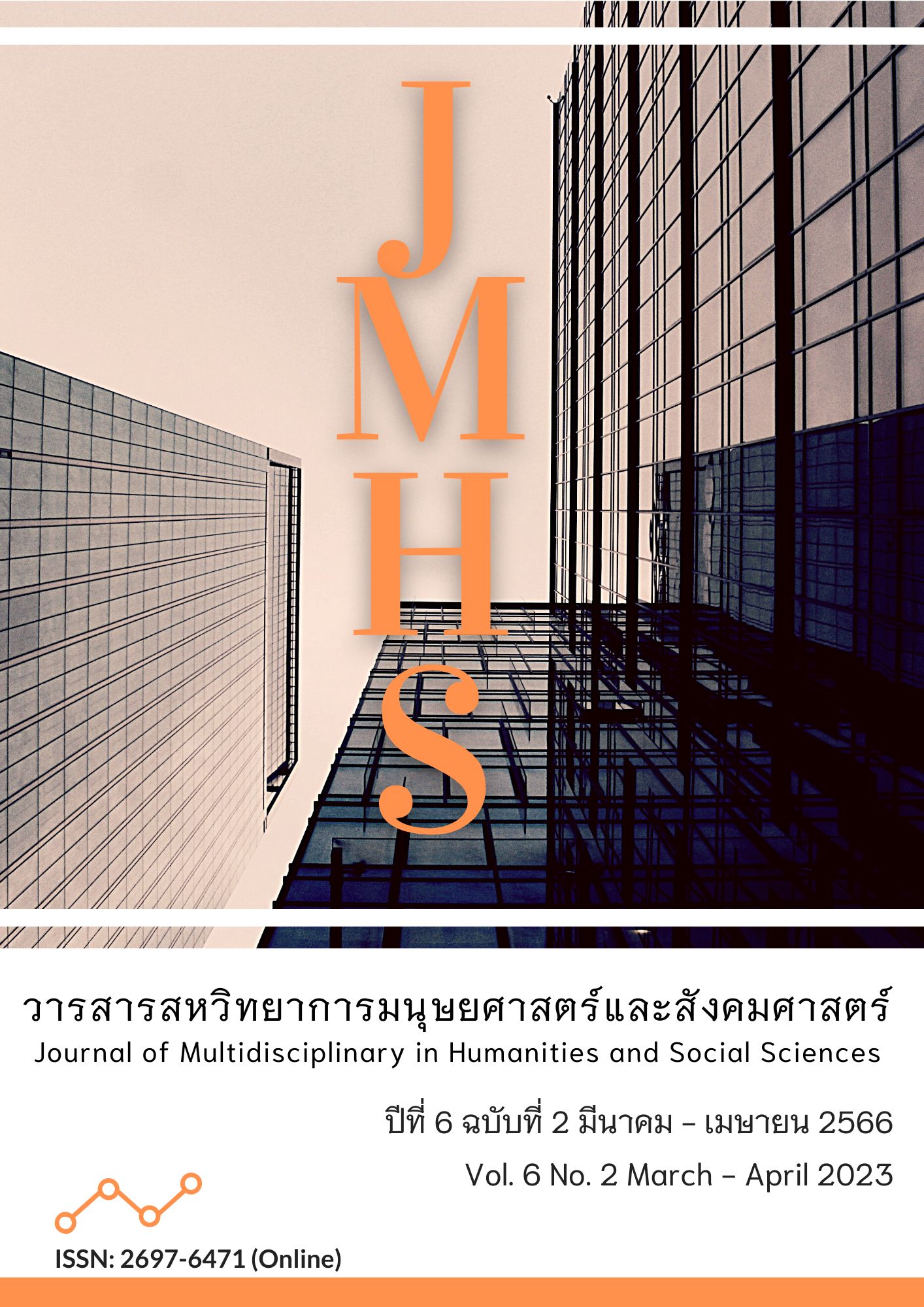การประยุกต์แนวคิดการกำกับดูแลกิจการและการบริหารการเงินของวัดในประเทศไทย
Main Article Content
บทคัดย่อ
บทความนี้มีวัตถุประสงค์ 1) เพื่อศึกษาสภาพการดำเนินงานด้านกระบวนการกำกับดูแลกิจการและการบริหารการเงินของวัดในประเทศไทย 2) เพื่อศึกษาแนวทางการประยุกต์ใช้แนวคิดการกำกับดูแลกิจการตามแนวทางของคณะกรรมการกำกับหลักทรัพย์และตลาดหลักทรัพย์แห่งประเทศไทย และการบริหารการเงินให้กับวัดในประเทศไทย เป็นการวิจัยเชิงคุณภาพ และกระบวนการสัมภาษณ์แบบเจาะลึก กลุ่มตัวอย่างคือ วัดหลวง จำนวน 10 วัด และวัดราษฎร์ จำนวน 10 วัด ผลการวิจัยพบว่า 1) วัดส่วนใหญ่ยังไม่มีการดำเนินการด้านกระบวนการการกำกับดูแลกิจการของวัดอย่างเป็นระบบมีลักษณะการบันทึกบัญชีไม่เป็นไปตามหลักการบัญชีที่รับรองทั่วไป การบันทึกบัญชีจัดทำโดยคณะกรรมการวัด การเบิกจ่ายผ่านเจ้าอาวาส หรือไวยาวัจกร และทำงานร่วมกับคณะกรรมการวัด 2)แนวทางการประยุกต์ใช้แนวคิดการกำกับดูแลกิจการสำหรับวัดไทย สามารถนำหลักการกำกับดูแลกิจการมาใช้ได้ 3 หมวด คือ หมวดที่ 3 บทบาทของผู้มีส่วนได้เสียในการกำกับดูแล หมวดที่ 4 การเปิดเผยและความโปร่งใส และหมวดที่ 5 ความรับผิดชอบของคณะกรรมการ และแนวทางการพัฒนาระบบการบริหารการเงินของวัดแบ่งเป็น 5 ด้านคือ 1)การจัดหาเงิน แยกออกมาจากการจัดหาเงินในนามวัด หรือการจัดหาเงินในนามพระสงฆ์ 2) การเก็บรักษาเงิน โดยแยกการเก็บรักษาเงินของวัด และการเก็บรักษาเงินของพระสงฆ์3)การใช้จ่ายโดยแยกการใช้จ่ายเงินของวัด และการใช้จ่ายเงินของพระสงฆ์ 4) ผู้บริหารจัดการเงินของวัด 5) การดูแลรักษา โดยแยกการดูแลรักษาเงินของวัดและการดูแลรักษาเงินโดยพระสงฆ์
Article Details

อนุญาตภายใต้เงื่อนไข Creative Commons Attribution-NonCommercial-NoDerivatives 4.0 International License.
ทัศนะและความคิดเห็นที่ปรากฏในวารสาร ถือเป็นความรับผิดชอบของผู้เขียนบทความนั้น และไม่ถือเป็นทัศนะและความรับผิดชอบของกองบรรณาธิการ
เอกสารอ้างอิง
กนก แสนประเสริฐ และคณะ. (2545). การจัดการดูแลทรัพย์ สินและศาสนสมบัติของวัด : สัมมนาเชิงปฏิบัติการเกี่ยวกับการจัดการสำหรับวัด. กรุงเทพฯ: สถาบันบัณฑิตพัฒนบริหารศาสตร์.
จันทนา สาขากร, นิพันธ์ เห็นโชคชัยชนะ และ ศิลปพร ศรีจั่นเพชร. (2557). การควบคุมภายในและการตรวจสอบภายใน. กรุงเทพฯ: ทีพีเอ็นเพรส.
ณดา จันทร์สม. (2556). บริหารการเงินของวัดในประเทศไทย. กรุงเทพฯ: สถาบันบัณฑิตพัฒนบริหารศาสตร์.
ตลาดหลักทรัพย์แห่งประเทศไทย. (2566, 18 มกราคม). นโยบายการกำกับดูแลกิจการและจรรยาบรรณกลุ่มตลาดหลักทรัพย์แห่งประเทศไทย. สืบค้นเมื่อ 16 กุมภาพันธ์ 2566, จาก https://www.set.or.th/th/about/overview/cg.
ธนกร วงษ์ปัญญา. (2561, 31 ตุลาคม). สะเทือนวงการสงฆ์จับตา 5 พระราชาคณะถูกสำนักพุทธฯ ร้องเอี่ยวทุจริตเงินทอนวัด. สืบค้นเมื่อ 31 ตุลาคม 2562, จาก http://www.thestandard.co.th.
Bhagat, S., & Bolton, B. (2008). Corporate Governance and Firm Performance. Journal of Corporate Finance, 14(3), 257-273. https://doi.org/10.1016/j.jcorpfin.2008.03.006
Brown, L. D., & Caylor, M. L. (2009). Corporate Governance and Firm Operating Performance. Review of Quantitative Finance and Accounting, 32, 129-144. https://doi.org/10.1007/s11156-007-0082-3
Duchain, I., & Fakoya, M. B. (2017). Effect of Corporate Governance Structure on the Financial Performance of Johannesburg Stock Exchange (JSE)-Listed Mining Firms. Sustainability, 9(6), 867. https://doi.org/10.3390/su9060867
Heidenheimer, A. J., Johnson, M., & Victor, L. T. (1989). Political Corruption: A Handbook. New Jersey: Transaction.
Jensen, M. C. (1993). The Modern Industrial Revolution, Exit, and the Failure of Internal Control Systems. The Journal of Finance, 48(3), 831-880. https://doi.org/10.1111/j.1540-6261.1993.tb04022.x
Miles, M. B., & Huberman, A. M. (1994). Qualitative Data. (2nd ed.). California: Sage Publication.


